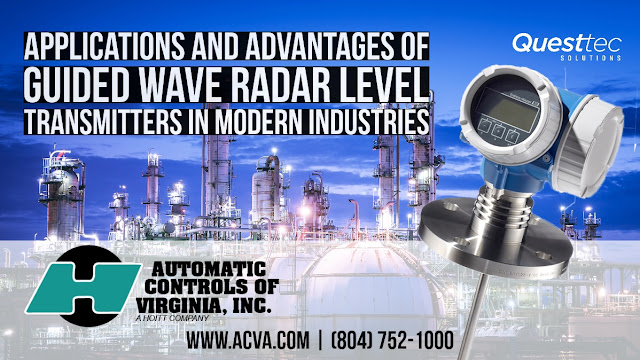Guided Wave Radar (GWR) level instruments, also known as Time Domain Reflectometry (TDR) instruments, are commonly used to measure the level of liquids, slurries, and solids in various containers. Here's a detailed explanation of their operating principles, applications, and best-use cases:
Operating Principles
- Time Domain Reflectometry (TDR): At the core of GWR is the principle of TDR. An electromagnetic pulse transmits down a probe (guide). When this pulse reaches a medium with a different dielectric constant (like the surface of a liquid), a portion of the signal reflects back to the transmitter.
- Measurement: The time the pulse takes to travel down the probe, reflect from the material's surface, and return is directly proportional to the distance traveled. By knowing the speed of the pulse and the time it took for the reflection to occur, the level of the medium is accurately calculated.
- Probe Types: There are different probe designs available depending on the application. The three most common are:
- Single Rod: Suitable for most applications, especially in smaller tanks or with aggressive media.
- Twin Rod or Coaxial: Ideal for applications with higher demands on accuracy, especially in narrow tanks or with disturbances.
- Cable: Used for tall, narrow tanks.
Industrial Applications
GWR level instruments are deployed in a variety of industries:
- Oil & Gas: Measuring levels of crude oil, refined products, or water in storage tanks.
- Chemicals: Monitoring levels of aggressive or caustic substances.
- Pharmaceuticals: Ensuring precise measurements in mixing and storage vessels.
- Food & Beverage: Measuring levels of various food products or ingredients, ensuring hygienic conditions.
- Power Generation: Monitoring levels in coal hoppers or water storage for cooling.
- Water & Wastewater: Tracking levels in storage tanks or sumps.
- Mining: Measuring levels of slurries or solid materials.
Best Applications for GWR
- High-temperature and High-pressure: GWR can function in conditions where other level measurement technologies might fail.
- Aggressive Media: Given the suitable probe material, GWR can handle corrosive or aggressive substances.
- Foaming or Agitated Surfaces: GWR provides reliable measurements even in conditions with foam or agitation, which might pose challenges for other technologies.
- Low Dielectric Media: GWR can measure levels of media with low dielectric constants, which some other radar level instruments might struggle with.
- Changing Media Properties: Even if the properties of the medium change (like density or conductivity), GWR measurements remain consistent.
- Safety: For applications where intrusive instruments are not ideal due to safety concerns, GWR offers a non-intrusive option.
The Questtec QTS Guided Wave Radar transmitter provides independent readings of both liquid and solid levels. These direct-insertion, top-mounted radars measure the interface and direct levels of liquids and solids under various pressures and temperatures. The transmitter uses GWR technology to send pulsating high-frequency microwave energy down the probe in a bypass chamber. Consequently, the QTS accurately indicates the actual process level, even if the density changes over time.
However, while GWR has many benefits, it's not suitable for every application. Extreme turbulence, heavy build-up on the probe, or very low dielectric constants can sometimes pose challenges. Always consult with a level measurement specialist when determining the best technology for a specific application.
